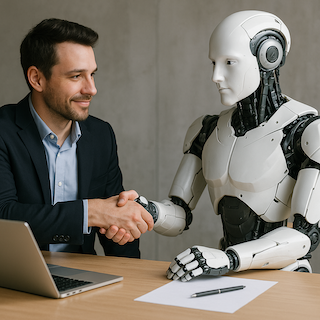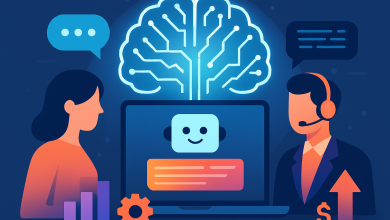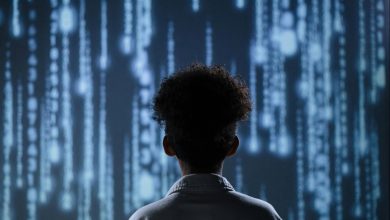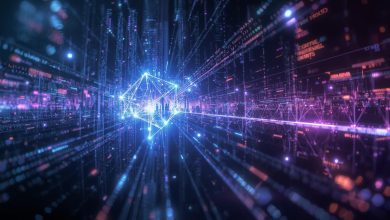
The landscape of digital labor is rapidly evolving, sparking fears that agentic AI will eventually replace human workers. Anthropic CEO Dario Amodei recently predicted a “white-collar bloodbath” will wipe out half of all entry-level white-collar jobs in the next one to five years.
When I speak with fellow executives about AI, I often hear a familiar mix of excitement and apprehension. Leaders see its potential to boost efficiency and insight, but quietly worry about its impact on the workforce. The excitement stems from the incredible potential of Agentic AI to drive efficiency, uncover insights, and scale operations. The apprehension, often whispered, concerns what happens to the human workforce when software begins to think for itself.
But what’s clear to me is that the future doesn’t belong to AI alone. It belongs to those who can build meaningful partnerships between human talent and intelligent agents.
In our work, we operate at the intersection of digital labor, where humans and AI agents collaborate to deliver services, manage operations, and provide decision support. What I’ve seen is that the most meaningful results come from redefining the way people work. AI, when deployed strategically, doesn’t displace human value; it unlocks it.
Redefining the Division of Labor
Too many AI implementations begin with a misguided question: “What can we replace?” That’s the wrong starting point. A more effective approach is to ask: “What can AI handle better than people, and where do humans provide irreplaceable value?”
AI agents excel at parsing large datasets, automating routine processes, and generating options based on past patterns. In roles like forecasting, lead prioritization, quality checks, or regulatory monitoring, they’re unmatched in speed and consistency. But ask them to resolve a conflict between team members, coach a struggling employee, or craft a strategy in the face of uncertainty, and they fall flat.
We must learn to divide work accordingly. When AI agents take on the structured, predictable tasks, people can focus on ambiguous problems, creative solutions, and interpersonal dynamics. That structure streamlines operations while allowing people to focus on work that draws on their uniquely human capabilities.
Elevating Human Work
Roles are shifting rapidly as AI assumes more of the structured and routine tasks across functions such as operations, finance, and customer service. When routine work is offloaded, employees can spend more time on what they’re uniquely good at: solving problems that don’t yet have a playbook. Low-value tasks no longer bog them down. Instead, they’re thinking more deeply, collaborating more creatively, and growing faster.
This shift not only improves business performance but also strengthens morale. Employees are more engaged and likely to stay when their work feels meaningful and tied to real outcomes. Roles that rely on judgment, creativity, and collaboration make a meaningful contribution to retention and talent development. They also tend to accelerate innovation in ways automation alone can’t.
A March 2025 Axios report revealed a growing divide inside enterprises over how AI adoption is reshaping work. While 41% of workers believe AI is already replacing jobs, executives often view it as a tool to enhance productivity, not replace headcount. This disconnect is already creating friction and undermining adoption efforts. It underscores the need for leaders to communicate clearly, involve employees early in the process, and demonstrate how AI will complement employee roles.
The Role of Leadership
To make AI-human collaboration work, leadership needs to be actively involved.
Start with a clear vision. Be transparent about what AI will do, how it will be implemented, and how it benefits the workforce. Uncertainty breeds hesitation, but a well-communicated plan builds trust and engagement.
Next, redesign roles and workflows. AI won’t deliver value if it’s simply added to outdated processes. Job design, performance metrics, and team structures must evolve to support genuine collaboration between humans and machines.
Finally, approach AI as a workforce strategy, not just a tech upgrade.
This means providing training that goes beyond tools to include collaborative practices. For example, Accenture’s marketing and communications team launched an AI training program that boosted brand value by 25%, cut manual tasks by nearly one-third, and improved speed-to-market by up to 55%. These gains came from helping managers delegate effectively between human talent and AI systems. We need to prepare teams to lead both people and intelligent agents.
An Alliance, Not a Tradeoff
There’s a growing fear that the advance of AI means the retreat of human work. I understand that fear. But if we lead with intention, the opposite can be true.
This isn’t about replacing the workforce. It’s a shift toward a new kind of alliance, where AI handles the tedious and people focus on the transformative. Algorithms surface insights and humans turn them into action. Where digital agents extend our capabilities, not diminish them.
This alliance requires more than investment. It calls for strategic foresight—scenario modeling, cross-functional planning, and a reevaluation of how roles, workflows, and leadership structures need to evolve in tandem with AI.
As leaders, we have to look beyond efficiency metrics and ask bigger questions: What kind of work do we want people to be doing? How can technology help us get there? What kind of workplace are we building for the future?
These are not abstract questions. They are practical imperatives. And the companies that answer them well will not only navigate the AI era—they’ll define it.





